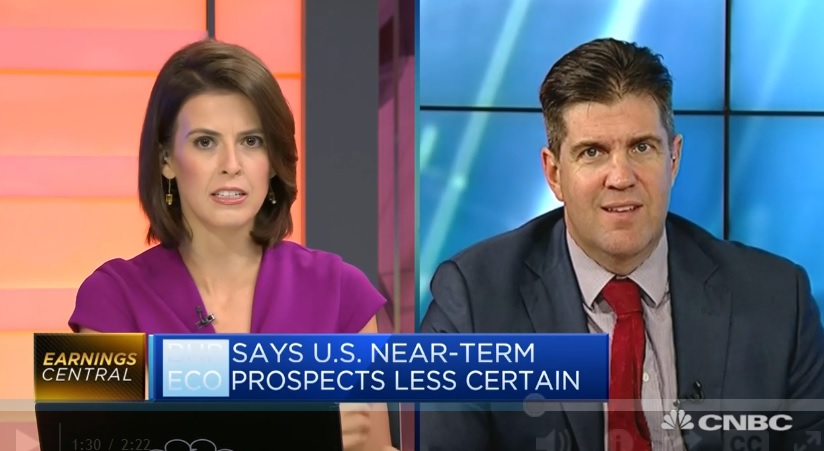Analysis
Earnings wrap: profits, dividends and disappointments
Hugh Dive Sep 2, 2019 — 7.50am
During the months of February and August, the majority of Australian listed companies reveal their profit results, and most provide guidance as to how they expect their businesses to perform in the coming year.
While we regularly meet with companies between reporting periods to gauge how their businesses are performing, during reporting season companies open up their closets to enable investors to have a more detailed look at their financials and ask management probing questions.
Until this happens, investors cannot know with certainty whether skeletons will jump out or if they will see the expected row of neatly ironed shirts.
Friday marked the end of the August 2019 reporting season. Companies with June and December year-ends had until Friday evening to release their financial results for the past six months, or they will be suspended from trading.
In general, company profits have been better than expected, and in this piece we are going to run through the key themes that have emerged over the last three weeks.
Show me the money
Capital management was again prevalent and understandably popular with investors, especially following significant falls in term deposit rates over the past year. Qantas, AGL Energy, Aurizon, Amcor, Link Admin and Brambles announced new share buy-back plans.
Special dividends were announced by the ASX, Suncorp, BHP, Coles and Medibank Private. Several companies also increased their dividend by a greater rate than their earnings per share, thus increasing their payout ratio.
While rising dividends play to the “search for yield” investment theme and provide a short-term boost to share prices, in the longer term companies do need to retain cash to reinvest in their operations to grow earnings in the future without adding to debt.
Across the industrial companies, the dividend payout ratio remains high and is now approaching 80 per cent.
Spending more than expected
Going into the August results season we were concerned that company results would show a dramatic pull-back in retail sales due to falling house prices and political uncertainty.
The financial results for large listed retail property trusts such as Scentre Group give a good insight into consumer spending.
Across Scentre’s portfolio of 41 shopping centres and 11,500 retailers, sales were up 1.3 per cent. Weakness in department stores was offset by sales growth in food, personal services, supermarkets and even fashion.
Elsewhere in retail, JB Hi-Fi saw sales grow 3.5 per cent as consumers opened their wallets to buy phones, gaming consoles and Fitbits; similarly, Tabcorp showed the continued willingness of Australians to bet on horses and play lotteries.
Coles and Woolworths both showed approximately 3 per cent sales growth in supermarkets and liquor.
The areas where consumer spending was weaker than expected included domestic travel, with Flight Centre reporting a decline in Australian leisure travel, though this could be attributed to weakness in the Australian dollar over 2019 which has reduced the attractiveness of foreign spending.
Coca-Cola also saw declining volumes which may be due to overall diminishing consumer appetites for carbonated soft drinks.
Shorts getting burned
While most of the market looks to own stocks that will report a good result and increase their dividends, some fund managers look to capitalise on bad results by short selling.
Of the 10 most shorted stocks at the end of July, only one – A2 Milk – has been profitable for the short sellers. The two largest short positions – Domino’s Pizza and JB Hi-Fi – would have been painful shorts as their prices have rallied over August.
Domino’s Pizza delivered a result that was around market expectations, with sales in Japan and Europe offsetting weakness in Australia.
The last thing a short seller would want to see on results day is a headline saying that the targeted company has delivered net profits above their guidance, which is what JB Hi-Fi did last week.
JB Hi-FI confirmed our view that the company is a world-class electrical retailer, growing sales and profits against a challenging consumer backdrop.
As good as it gets for diggers?
The miners (mainly the iron ore producers) reported strong profit growth in August driven by elevated commodity prices.
Iron ore went from $US71 a tonne at the start of 2019 to peak at $US125 a tonne at the end of June due to the failure of a tailings dam in Brazil that killed 248 people.
This accident resulted in the miner Vale shutting down 40 million tonnes of iron ore production, tightening up the global market for iron ore.
Rio Tinto, BHP and Fortescue all reported solid growth and increased dividends, but this was overshadowed by the 30 per cent fall in the iron ore price since the end of the financial year.
Looking ahead, planned mine expansions (and resultant increased supply), the impact of trade tensions between China and the US, as well as a moderating Chinese demand should see the price of iron ore continue to drift downwards.
On conference calls, management teams from the miners promised to maintain capital discipline, increase returns to shareholders and pay down debt; all sound strategies given the weakening of commodity prices.
What concerned us was the evidence of rising costs apparent in the results of BHP, South32 and Rio Tinto. In 2020, the mining companies could face costs moving higher (particularly labour) at a time when commodity prices are weakening and demand is diminished.
Hugh Dive is the chief investment officer of Atlas Funds Management.




